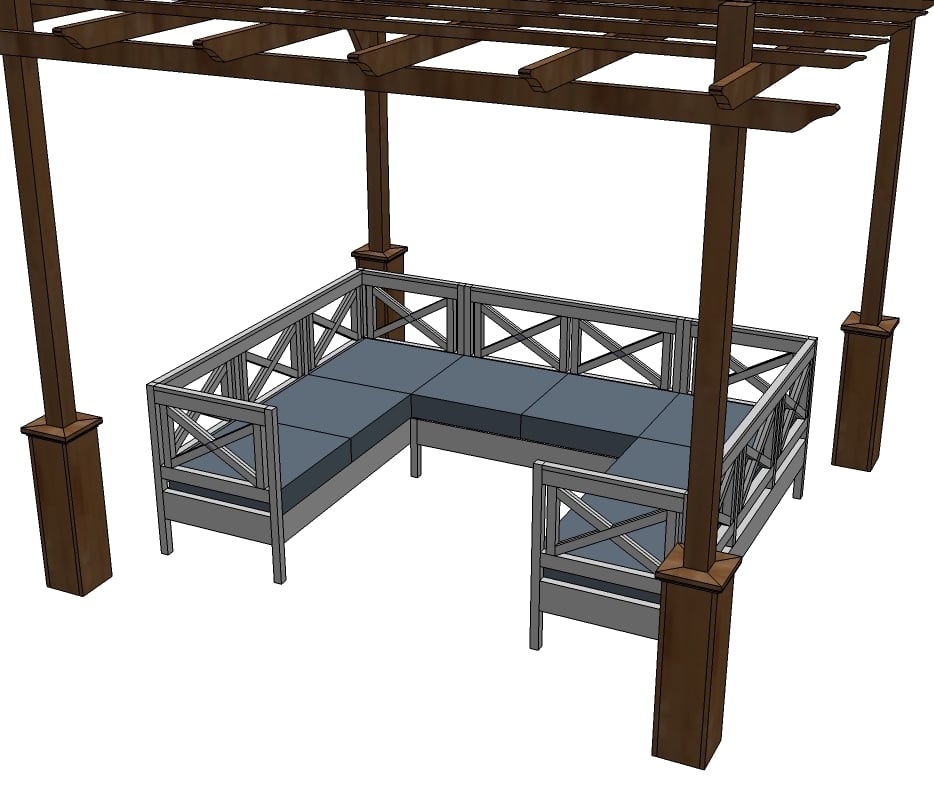
An outdoor loveseat project plan featuring X back, double cushions, and an armless design that works with the Weatherly Sofa to create a dream sectional. Uses standard 24" x 24" deep seat cushions, available everywhere.
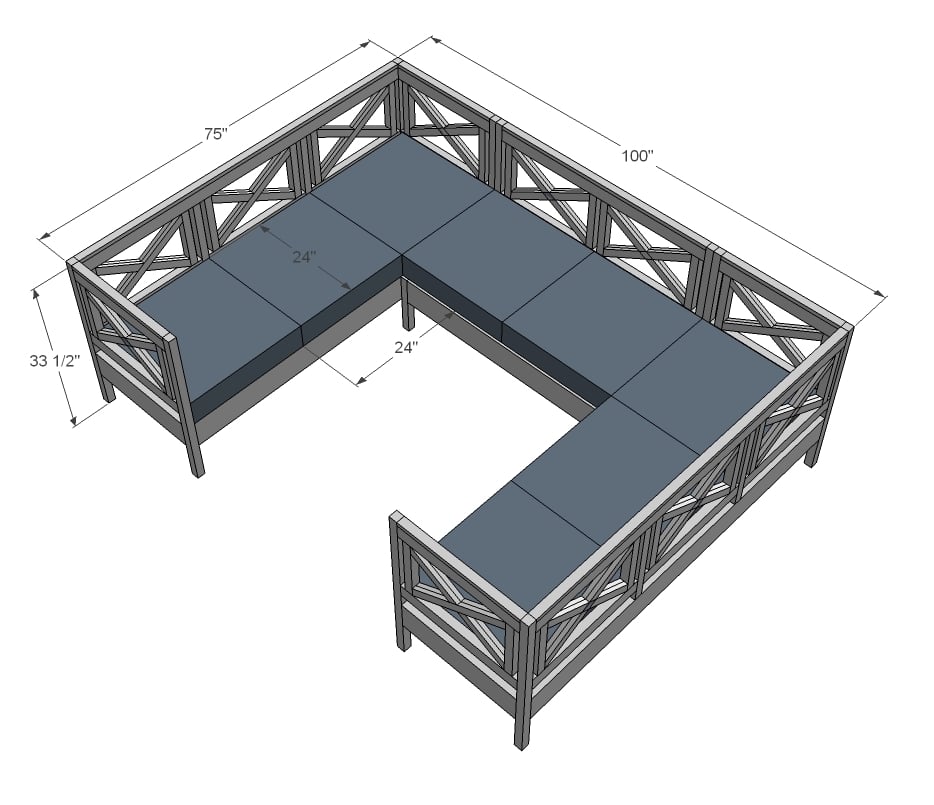
Preparation
3 - 1x3 @ 8 feet long (slats)
4 - 1x2 @ 20 13/16" (both ends cut at 30 degrees off square, ends parallel to each other)
Please read through the entire plan and all comments before beginning this project. It is also advisable to review the Getting Started Section. Take all necessary precautions to build safely and smartly. Work on a clean level surface, free of imperfections or debris. Always use straight boards. Check for square after each step. Always predrill holes before attaching with screws. Use glue with finish nails for a stronger hold. Wipe excess glue off bare wood for stained projects, as dried glue will not take stain. Be safe, have fun, and ask for help if you need it. Good luck!
Instructions
Step 1
Step 2
Step 4
Now add the sides. This is not super structurally important, so I glued and nailed mine - and there was no issue. You could use the Kreg Jig™ - but the pocket holes are going to cross, and I had some issues with screws overlapping. You will need to drill your pocket holes in the 2x2s in this step
Step 7
And the legs. Shown above is the Kreg Jig™ pocket holes, but you could also use 2 1/2" screws countersunk from the legs (That's what I ended up doing, and it worked great!)
Step 8
Now the sides - use the Kreg Jig™ as shown above or again, 2 1/2" screws countersunk with glue.
Step 9
It is always recommended to apply a test coat on a hidden area or scrap piece to ensure color evenness and adhesion. Use primer or wood conditioner as needed.
















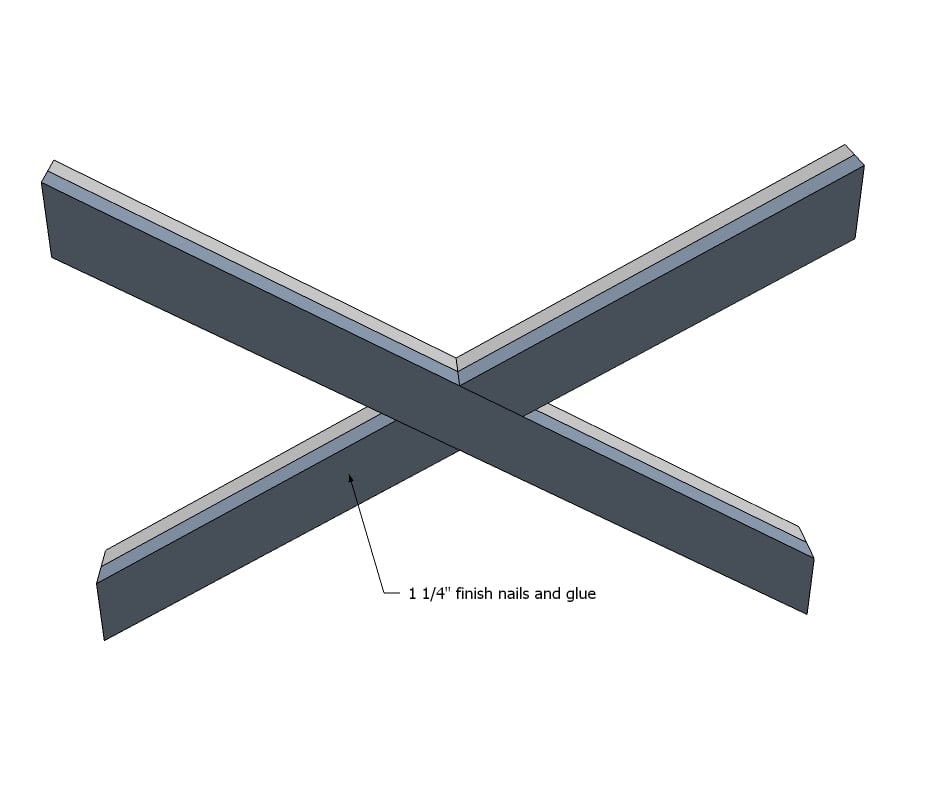
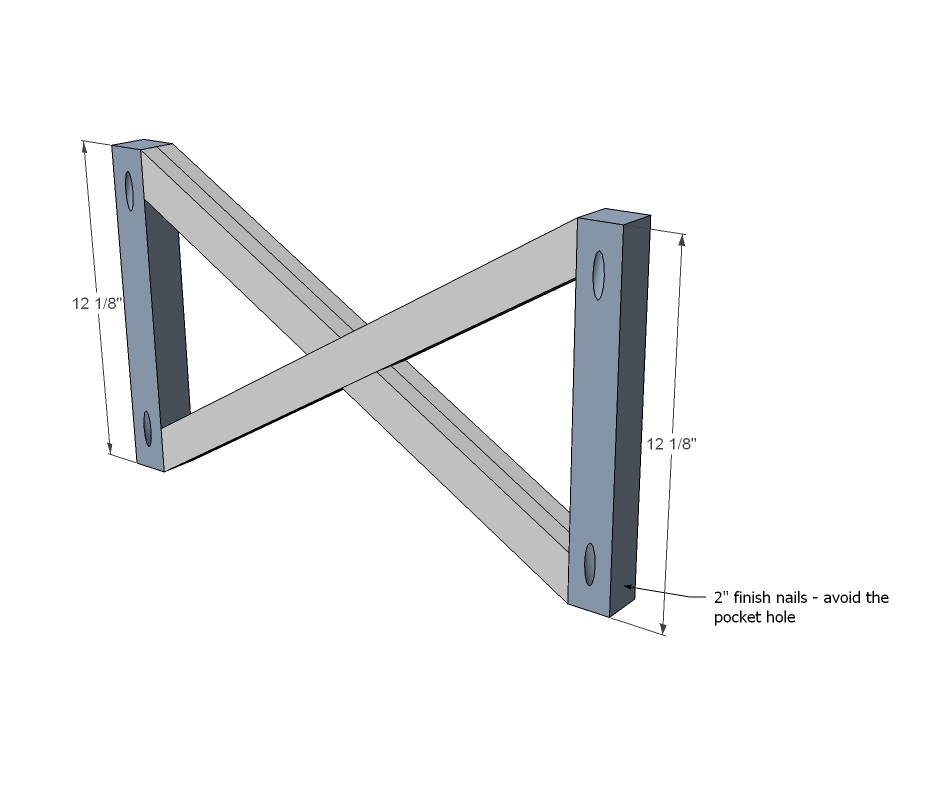
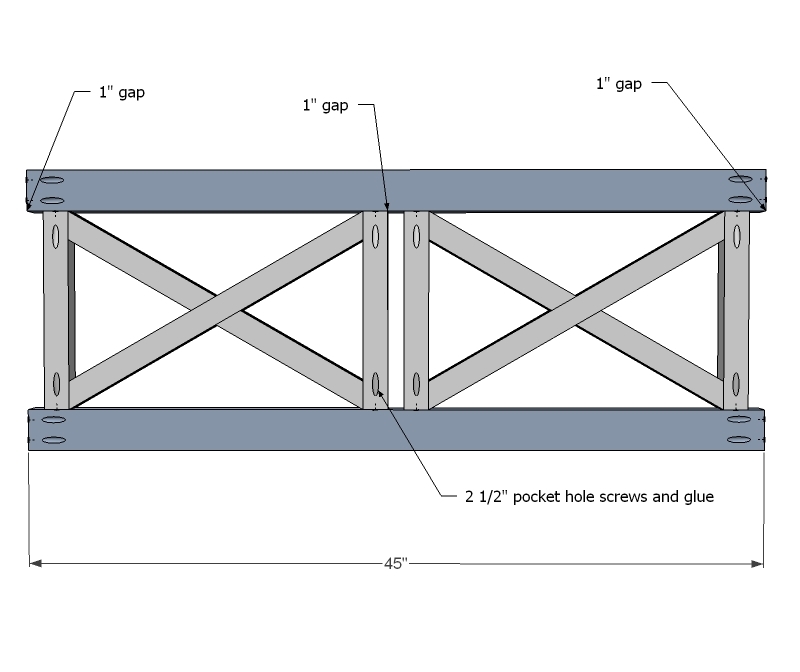
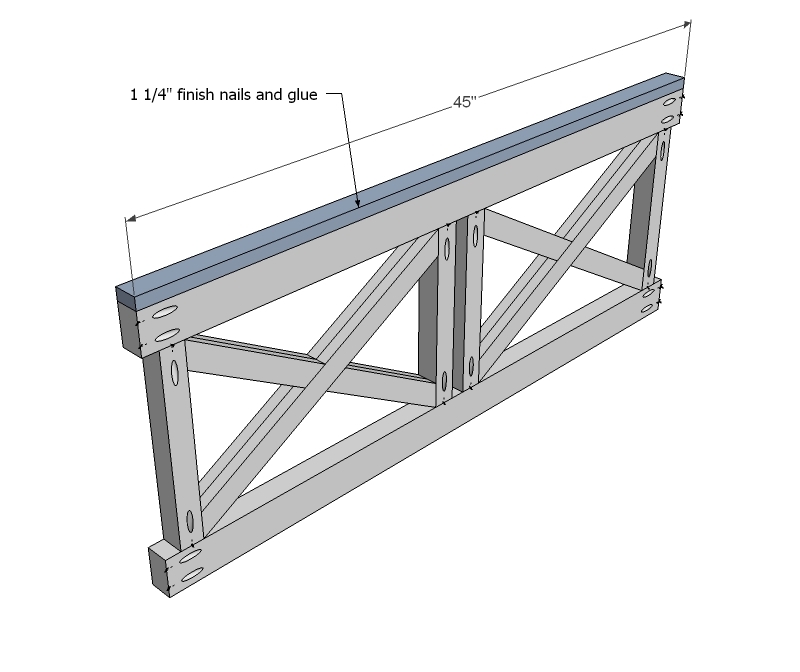

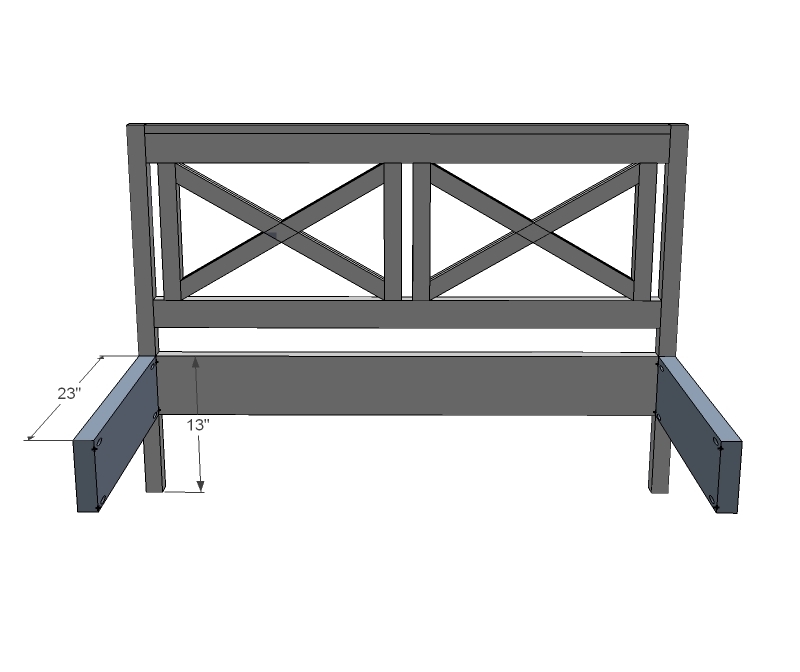
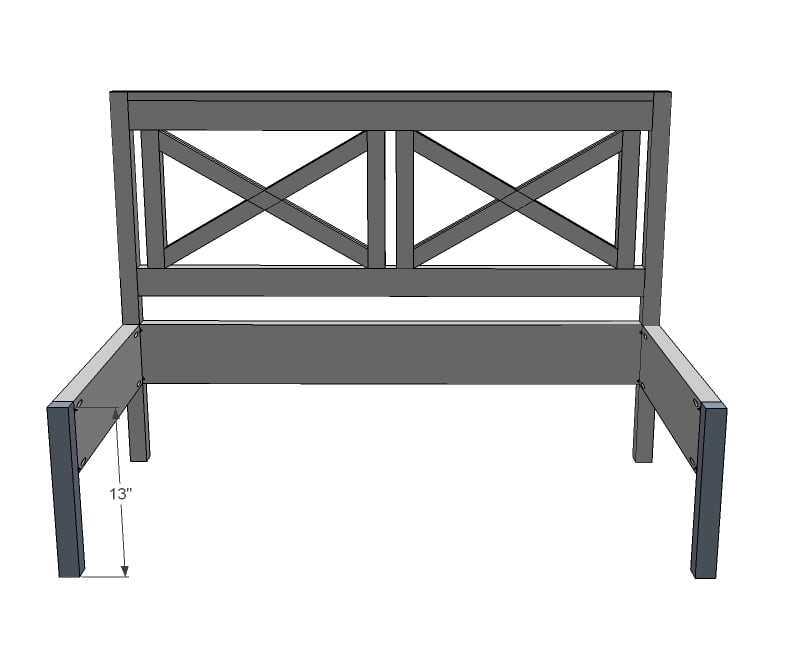
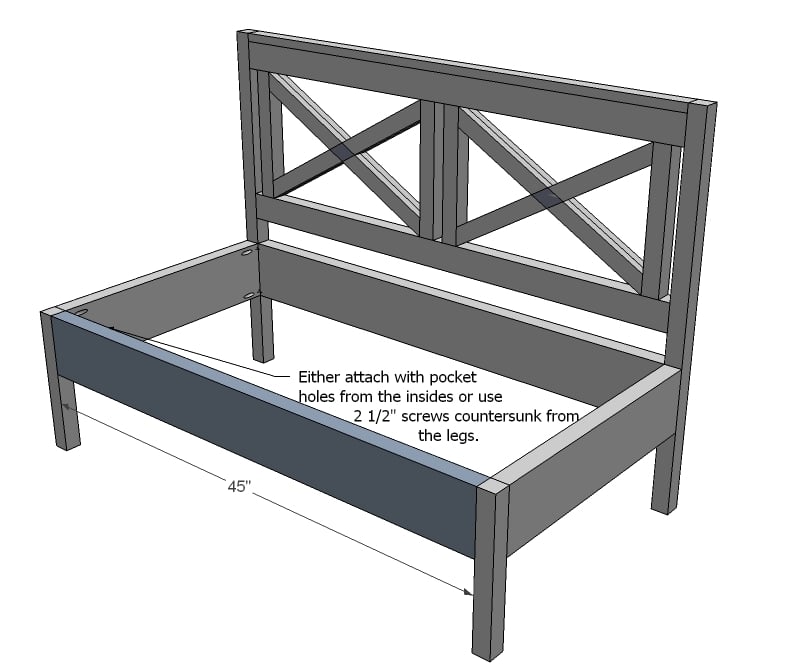

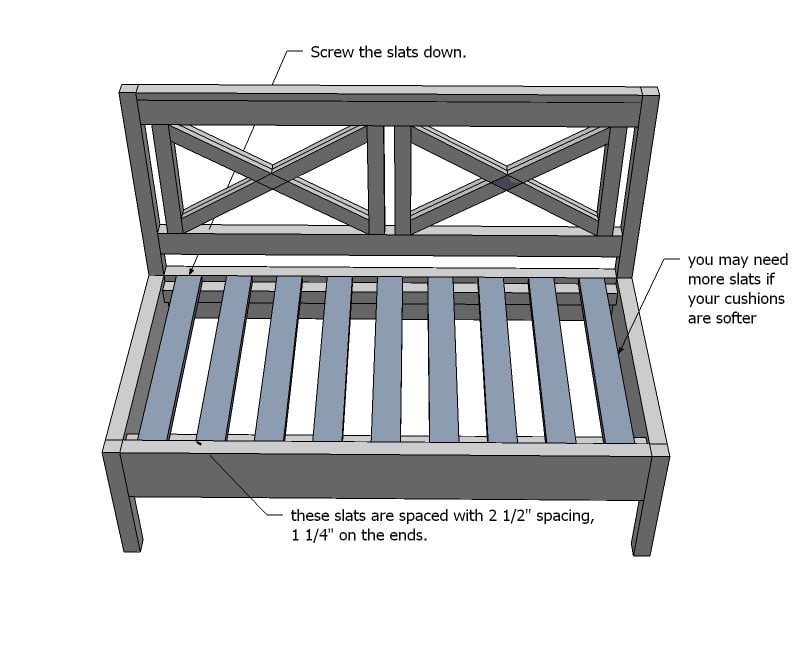
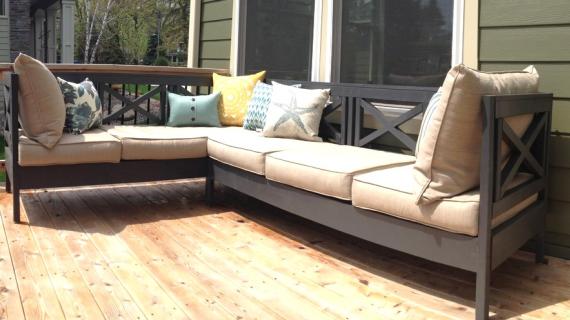
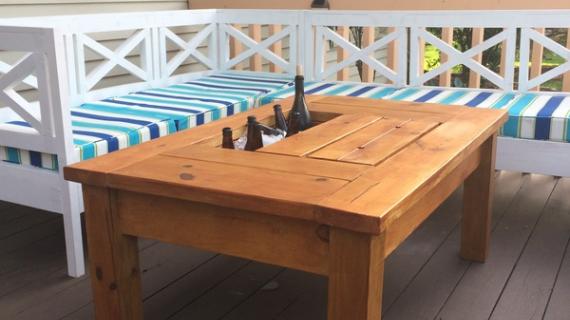
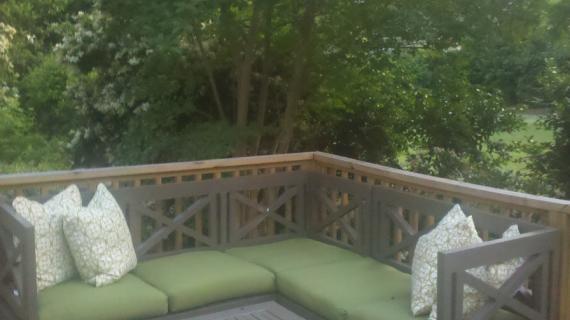
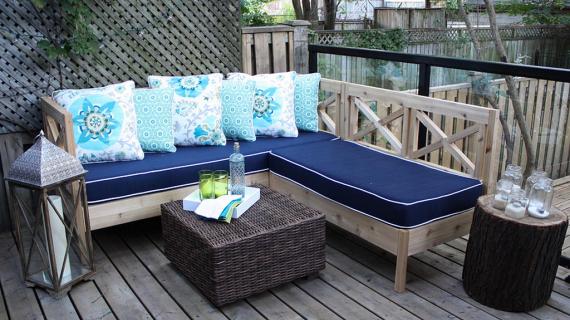
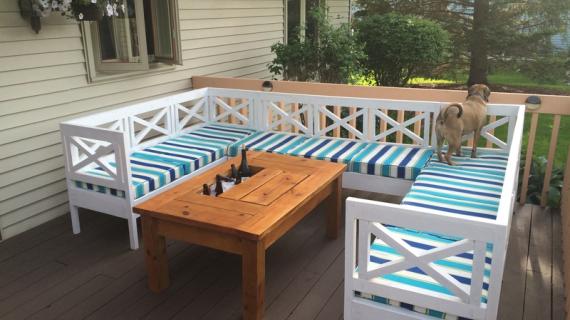

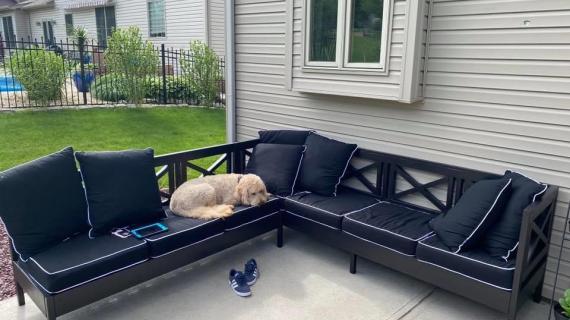
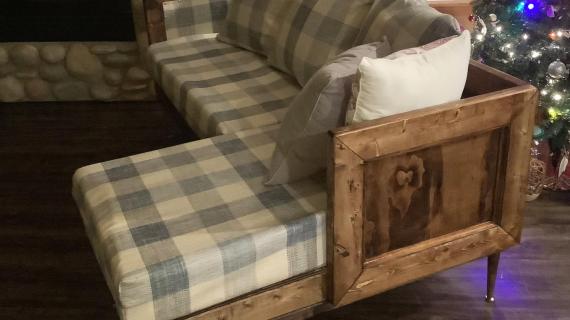

Comments
Nora (not verified)
Mon, 04/18/2011 - 14:04
Sectional...
You are awesome... I was trying to see how I could come up with a way to update your plans to do this one... I loved it when I saw the PBbcatalog.. Awesome job... Can't wait for the sofa plans...
Butch
Mon, 02/06/2012 - 12:10
Great look!
I'm using this idea to build some custom patio furniture by our new pool. Thanks for sharing.
Eric (not verified)
Fri, 06/08/2012 - 10:57
Arbor
Is there a plan for the virtual arbor in the picture as well?
Eric (not verified)
Fri, 06/08/2012 - 11:30
Um nevermind.. Sorry.. This
Um nevermind.. Sorry.. This looks great..
JordanMorris (not verified)
Tue, 06/26/2012 - 10:33
ESTIMATE PRICE?
I love your plans Ana, but is there any way I could ask you for an estimate total cost to build these were? Lumber/hardware/etc.. just what you bought? I find so many cute plans but I shy away because I don't want to start it and end up finding out it's way more than I bargained for, lol :(
bkay8686
Mon, 05/19/2014 - 08:07
Dimension question
Hello!
So I am using these plans but adjusting for 27.5 x 27.5 cushions found at west elm. One thing I noticed if you use the plans above for 24 x 24 cushions, the total length of the seat comes out to be 49" (45" 2x6 plus (2) 2x2s for legs). Is there supposed to be an inch difference between the total length of the seat and the combined length of two 24x24 cushions (48")?
I adjusted the 2x6 cuts to be 52" (back and front) and 26.5" (sides) to account for my 3.5" difference with my cushions and the 24x24 used for the above project. Finally, one note is to NOT use pressure treated 2x2s because they are actually 1.5x1.5 which will mess up the dimensions if following the dimensions above verbatim.
Love the plan but looking to understand if the 1" difference is intentional or not.
pde00311
Mon, 05/19/2014 - 09:44
Dimensions
bkay8686, This question is actually fresh in my mind since I am just finishing up building and modifying this design to fit the 22 x 22 Pier One cushions that I bought over the winter. If you are building an armless loveseat as part of a sectional, you are going to want the combined cushion length to equal the combined length of your boards, INCLUDING the frame. In other words, you ultimately want the cushions to go flush over the 2 x 2 frame, your 2 x 6's need to be cut shorter (reduced by the width of your 2 x 2s) to accommodate this, and adding an extra inch would be awkward (accordingly, I think Ana's plan measurements anticipate 2 x 2s that actually measure 1.5 x 1.5). HOWEVER, if you are trying to build from the plans with the armrest/side-piece, the cushions will actually fit inside the armrest, so to speak. So in that instance, the 2 x 6's should be cut to your combined cushion length. Does that make sense?
pde00311
Mon, 05/19/2014 - 10:13
Dimensions
Oh...I almost forgot, in terms of depth, the cushions on both the armed and armless plans fit inside the back of the couch, but are flush with the front. So if your west elm cushions measure at 27.5, the width measurement of your 2 x 6 added to the front 2 x 2 should equal 27.5. (depending on the width of your 2x2s, the combined measurement of your sides will equal 29-29.5).